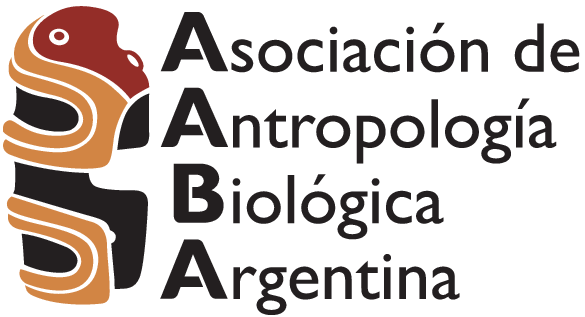A man from San Juan: facial approximation within anthropology/Un hombre de San Juan: aproximación facial en antropología
Resumen
ABSTRACT Within both anthropology and forensic identification, a facial approximation (also known as "facial reconstruction") is often presented as an accomplished fact, with minimal, or no evidence of the research and methods used to achieve the result. This paper presents a detailed overview of the research and methods used for a 2D computer graphic facial approximation of a prehistoric man unearthed in the Jachal Valley, San Juan Province, Argentina. Understood to be a member of the extinct Huarpe, this individual's skull displays many of the morphological features that are consistent with what is known about this group of early Amerindian farmers. Because many of the recommended methods that inform this facial approximation have yet to be verified, and those that have been appropriately tested are based on statistical averages of human variation, the results need to be viewed as indicative of this individual's possible facial appearance using current levels of knowledge, rather than as a definitive result.
RESUMEN Dentro de la antropología y la identificación forense, la aproximación facial (también conocida como "reconstrucción facial") se presenta frecuentemente como un hecho consumado, con evidencia mínima de las investigaciones y los métodos usados para alcanzar los resultados. Este trabajo presenta un panorama detallado de la investigación y los métodos usados para realizar una aproximación facial grafica en 2D de un hombre prehistórico del valle de Jachal, provincia de San Juan, Argentina. Se entiende que corresponde a un miembro del extinto grupo Huarpe. El cráneo del individuo muestra numerosos rasgos morfológicos que son consistentes con lo que se conoce acerca de este grupo de agricultores tempranos americanos. Debido a que muchos de los métodos utilizados en esta reconstrucción facial aun no han sido verificados y aquellos que han sido debidamente probados se basan en promedios estadísticos de la variación humana, los resultados presentados deben ser vistos como indicativos de la posible apariencia facial del individuo dado el nivel actual de conocimiento, más que como un resultado definitivo.
Descargas
Métricas
Citas
Benazzi S, Bertelli P, Lippi B, Bedini E, Caudana R, Gruppioni G, Mallegni F. 2010. Virtual anthropology and forensic arts: the facial reconstruction of Ferrante Gonzaga. Journal of Archaeological Science 37(7):1572-1578.
Benazzi S, Fantini M, De Crescenzio F, Mallegni G, Mallegni F, Persiani F, Gruppioni G. 2009. The face of the poet Dante Alighieri reconstructed by virtual modelling and forensic anthropology techniques. Journal of Archaeological Science 36:278-283.
Bernal V, Novellino P, Gonzalez P, Perez SI. 2007. Role of wild plant foods among late Holocene hunter-gatherers from Central and North Patagonia (South America): An approach from dental evidence. American Journal of Physical Anthropology 133:1047-1059.
Bernal V, Perez SI, Gonzalez P. 2006. Variation and causal factors of craniofacial robusticity in Patagonian hunter-gatherers from the Late Holocene. American Journal of Human Biology 18:748-765.
Bruce V, Young A. 1998. In the eye of the beholder: The science of face perception. Oxford: Oxford University Press.
Buikstra JE, Ubelaker DH. 1994. Standards for data collection from human skeletal remains. Proceedings of a seminar at the Field Museum of Natural History. Fayetteville, Arkansas: Arkansas Archeological Survey.
Canals Frau S. 1946. The Huarpe. In: Steward JH, editor. Handbook of South American Indians: The Marginal Tribes (Volume 1). Washington: Smithsonian Institution Bureau of American Ethnology Bulletin 143. p 169-175.
Cesarani F, Martina MC, Grilletto R, Boano R, Roveri AMD, Capussotto V, Giuliano A, Celia M, Gandini G. 2004. Facial reconstruction of a wrapped Egyptian Mummy using MDCT. American Journal of Roentgenology 183(3):755-758.
Chamberlain AF. 1912. The Allentiacan, Bororoan, and Calchaquian linguistic stocks of South America. American Anthropologist 14(3):499-507.
Claes P, Vandermeulen D, De Greef S, Willems G, Clement J, Suetens P. 2010. Computerized craniofacial reconstruction: conceptual framework and review. Forensic Science International 201:138-145.
Clement JG, Ranson DL. 1998. Craniofacial identifi cation. In: Clement JG, Ranson DL, editors. Craniofacial identifi cation in forensic medicine. London: Arnold. p 3-8.
Del Papa MC, Perez SI. 2007. The infl uence of artificial cranial vault deformation on the expression of cranial nonmetric traits: Its importance in the study of evolutionary relationships. American Journal of Physical Anthropology 134(2):251-262.
Deter CA. 2009. Gradients of occlusal wear in huntergatherers and agriculturalists. American Journal of Physical Anthropology 138:247-254.
Fabra M, Laguens A, Demarchi D. 2007. Human colonization of the Central Territory of Argentina: Design matrix models and craniometric evidence. American Journal of Physical Anthropology 133:1060-1066.
Farkas LG. 1987. Age- and sex-related changes in facial proportions. In: Farkas LG, Munro IR, editors. Anthropometric facial proportions in medicine. Springfield: Charles C Thomas. p 29-56.
Farkas LG. 1994. Anthropometry of the head and face. New York: Raven.
Farkas LG, Munro IR. 1987. Anthropometric facial proportions in medicine. Springfi eld: Charles C Thomas.
Fedosyutkin B, Nainys J. 1993. The relationship of skull morphology to facial features. In: Iscan MY, Helmer RP, editors. Forensic analysis of the skull: craniofacial analysis, reconstruction, and identifi cation. New York: Wiley-Liss. p 119-213.
Gaytan E, Mansilla-Lory J, Leboreiro I, Pineda S. 2009. Facial reconstruction of a pathological case. Journal of Forensic Science, Medicine and Pathology 5:95-99.
George RM. 1987. The lateral craniographic method of facial reconstruction. Journal of Forensic Sciences 32(5):1305-1330.
George RM. 1993. Anatomical and artistic guidelines for forensic facial reconstruction. In: Iscan MY, Helmer RP, editors. Forensic analysis of the skull: craniofacial analysis, reconstruction, and identifi cation. New York: Wiley-Liss. p 215-227.
George RM. 2007. Facial geometry: graphic facial analysis for forensic artists. Springfi eld Illinois: Charles C Thomas.
Gerasimov MM. 1955. The reconstruction of the face from the basic structure of the skull. Moscow: Nauka.
Gerasimov MM. 1971. The face fi nder. Philadelphia: J.B. Lippincott.
Gombrich EH. 1982. The mask and the face: the perception of physiognomic likeness in life and art. The image and the eye: further studies in the psychology of pictorial representation. Oxford: Phaidon.
González-José R, Ramirez-Rozzi F, Sardi M, MartinezAbadias N, Hernandez M, Pucciarelli H. 2005. Functional-cranial approach to the infl uence of economic strategy on skull morphology. American Journal of Physical Anthropology 128:757-771.
Gonzalez PN. 2008. Morfometría geométrica aplicada al análisis del dimorfi smo sexual en restos oseos humanos de individuos adultos y subadultos. Unpublished PhD Thesis. Universidad Nacional de La Plata, La Plata.
Gonzalez P, Perez SI, Bernal V. 2010. Ontogeny of robusticity of craniofacial traits in modern humans: A study of South American populations. American Journal of Physical Anthropology 142:367-379.
Graw M. 2001. Signifi cance of the classical morphological criteria for identifying gender using recent skulls. Forensic Science Communications 3(1).
Hayes S, Buckley H, Bradley R, Milne N, Dennison J. 2011. Approximating the face of ‘Aunty’: A question of likeness. Journal of Archaeological Method and Theory. DOI 10.1007/s10816-011-9115-2.
Hayes S, Valentin F, Buckley H, Spriggs M, Bedford S. 2009. Faces of the Teouma Lapita people: Art, accuracy and facial approximation. Leonardo 42(3):284-285.
Helmer RP, Rochricht S, Petersen D, Mohr F. 1993. Assessment of the reliability of facial reconstruction. In: Iscan MY, Helmer RP, editors. Forensic analysis of the skull: craniofacial analysis, reconstruction, and identifi cation. New York: Wiley-Liss. p 229-246.
Kustar A. 1999. Facial reconstruction of an artifi cally distorted skull of the 4th to the 5th century from the site of Mozs. International Journal of Osteoarchaeology 9:325-332.
Kustar A. 2004. The facial restoration of Antal Simon, a Hungarian priest-teacher of the 19th c. HOMO 55:77-90.
Larrabee W, Makielski K. 1993. Surgical anatomy of the face. New York: Raven. Macho GA. 1989. Descriptive morphological features of the nose - an assessment of their importance for plastic reconstruction. Journal of Forensic Sciences 34(4):902-911.
Needham C. 2002. Drawing the past: reconstructing the visual manifestations of disease and trauma from archaeological human remains [M Phil]. Manchester: University of Manchester.
Perez SI. 2006. Artifi cial cranial deformation in South America: a geometric morphometrics application. Journal of Archaeological Science 34:1649-1658.
Phenice TW. 1969. A newly developed visual method of sexing the os pubis. American Journal of Physical Anthropology 30(2):297-301.
Prag J, Neave R. 1997. Making faces: using forensic and archaeological evidence. London: British Museum Press.
Rynn C, Wilkinson M, Peters H. 2010. Prediction of nasal morphology from the skull. Forensic Science, Medicine and Pathology 6(1):20.
Sardi M, Béguelin M. 2010. Skeletal differentiation at the southernmost frontier of Andean agriculture. In: Pinhasi R, Stock J, editors. Human bioarchaeology of the transition to agriculture. Oxford: John Wiley & Sons. p 429-450.
Sardi M, Novellino P, Pucciarelli H. 2006. Craniofacial morphology in the Argentine Centre-West: Consequences of the transition to food production. American Journal of Physical Anthropology 130:333-343.
Shepherd J, Davies G, Ellis H. 1981. Studies of cue saliency. In: Davies G, Ellis H, Shepherd J, editors. Perceiving and remembering faces. London: Academic Press. p 105-131.
Snow CC, Gatliff BP, McWilliams KR. 1970. Reconstruction of facial features from the skull: an evaluation of its usefulness in forensic anthropology. American Journal of Physical Anthropology 33:221-228.
Standring S. 2008. Gray’s Anatomy: The anatomical basis of clinical practice. Elsevier.
Stephan CN. 2002. Facial approximation: globe projection guideline falsifi ed by exophthalmometry literature. Journal of Forensic Sciences 47(4):730-735.
Stephan CN. 2003. Facial approximation: An evaluation of mouth-width determination. American Journal of Physical Anthropology 121(1):48-57.
Stephan CN, Henneberg M, Sampson W. 2003. Predicting nose projection and pronasale position in facial approximation: a test of published methods and proposal of new guidelines. American Journal of Physical Anthropology 122:240-250.
Stephan CN, Simpson EK. 2008. Facial soft tissue depths in craniofacial identifi cation (Part 1): An analytical review of the published adult data. Journal of Forensic Sciences 53(6):1257-1272.
Steward JH. 1946. Handbook of South American Indians. Washington: Smithsonian Institution Bureau of American Ethnology Bulletin.
Taylor KT. 2001. Forensic art and illustration. Boca Raton: CRC Press.
Taylor RG, Angel C. 1998. Facial reconstruction and approximation. In: Clement JG, Ranson DL, editors. Craniofacial identifi cation in forensic medicine. London: Arnold. p 177-186.
Tiesler V, Cucina A, Pacheco R. 2004. Who was the Red Queen? Identity of the female Maya dignitary from the sarcophagus tomb of Temple XIII, Palenque, Mexico. HOMO 55:65-76.
Warwick R, Williams P. 1973. Gray’s Anatomy. Edinburgh: Longman.
Wilkinson C. 2004. Forensic facial reconstruction. Cambridge: Cambridge University Press.
Wilkinson C, Motwani M, Chiang E. 2003. The relationship between the soft tissues and the skeletal detail of the mouth. Journal of Forensic Science 48(4):728-232.
Wilkinson C, Neave R. 2003. The reconstruction of a face showing a healed wound. Journal of Archaeological Science 30:1343-1348.
Woo TL. 1931. On the asymmetry of the human skull. Biometrika 22(3/4):324.
Descargas
Publicado
Cómo citar
Número
Sección
Licencia
La RAAB es una revista de acceso abierto tipo diamante. No se aplican cargos para la lectura, el envío de los trabajos ni tampoco para su procesamiento. Asímismo, los autores mantienen el copyright sobre sus trabajos así como también los derechos de publicación sin restricciones.






























